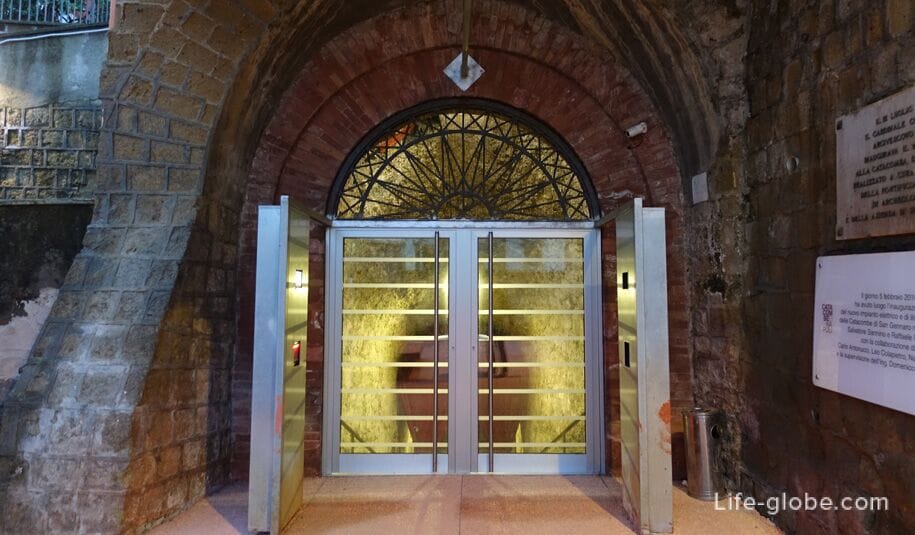
The catacombs of San Gennaro, or the catacombs of St. Januarius, also known as the catacombs of Naples (Catacombe di San Gennaro / Catacombe di Napoli) is the largest Christian catacomb complex in southern Italy and one of the oldest cemeteries of the early period of Christianity.
Currently, the catacombs of San Gennaro, along with the catacombs of San Gaudioso, part of the route "Napoli Sotterranea". The catacombs are located in the Northern part of Naples, on the slope leading up to Capodimonte, near the Basilica of San Gennaro Extra Moenia (La Basilica di San Gennaro Extra Moenia).
The catacombs of San Gennaro carved from tuff (porous stone) and located on two nonoverlapping levels, characterized by wide spaces.
The original core of the catacombs dates back to the 2nd century ad. Probably, initially it was a grave of a noble family, which then expanded and gave place to the Christian community.
The lower part of the catacombs (San Gennaro Inferiore) was developed around the Basilica of Sant Agrippina. There is an impressive lower lobby with high ceilings up to 6 meters, containing a bath of baptism, made by order of Bishop Paul II, who in the 8th century took refuge in the catacombs because of the iconoclastic hatred.
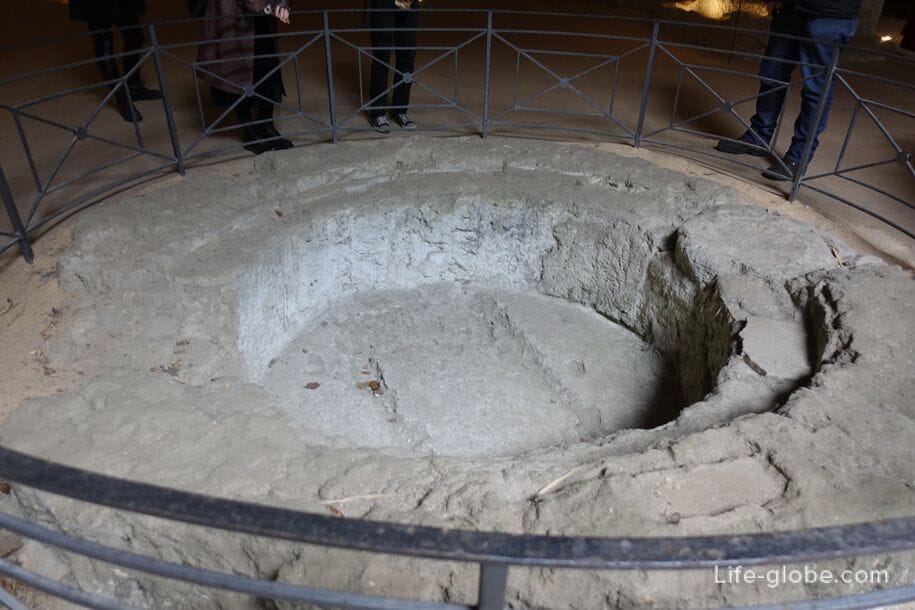
The extension of the catacombs of the lower level began in the fourth century ad, after the room in the catacombs the remains of Sant Agrippina - St. Agrippina, the first patron Saint of Naples. Over the grave was cut down hypogeusia Basilica, consisting of nave only, which is still carved into the rock chair, used as a place for confirmation, and the altar with a hole where the faithful could gather and touch the Saint's tomb.
The underground Basilica is an example of underground places of worship growing at the time of the Christian faith. Even today mass is celebrated in the Basilica of Sant Agrippina.
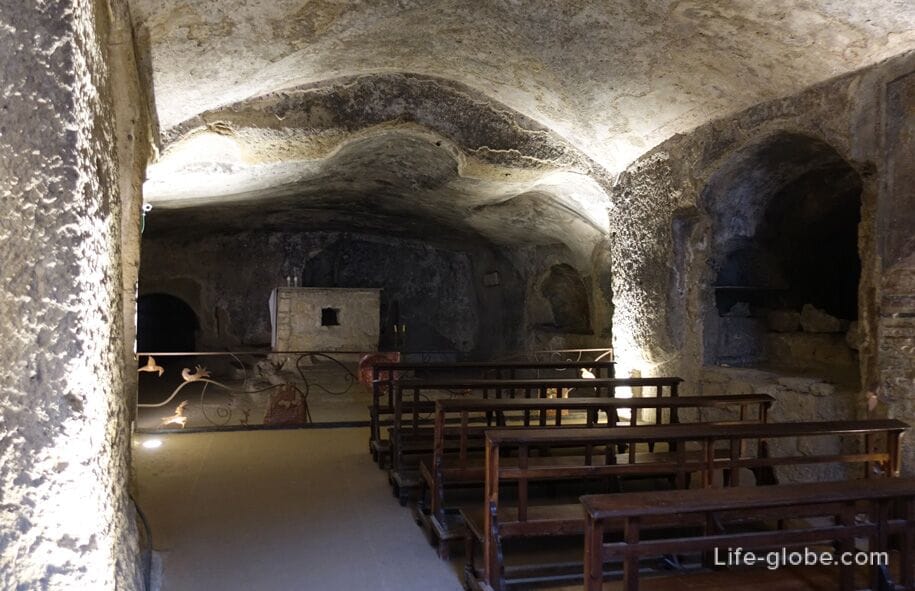
Also at the bottom of the catacombs is a dense network of tunnels, carved into the tuff, a clinic or a peripheral corridors, along which, on both sides of the horizontal tombs.
Burials at both levels of the catacombs were divided into: loculi - niches, where the body and the simplest form of burial; Arcosolium - arched recesses for tombs, basically designed for a family funeral, they are built into the walls of the galleries and booths and are more complex than loci. We rarely used the graves dug in the ground - the most modest. Sometimes in the bottom of the lunette found children's graves, another example of efficient use of space in the catacombs.
To emphasize the importance of families, some acrosome could be decorated with frescoes or mosaics, the remains of which can be seen at the present time.
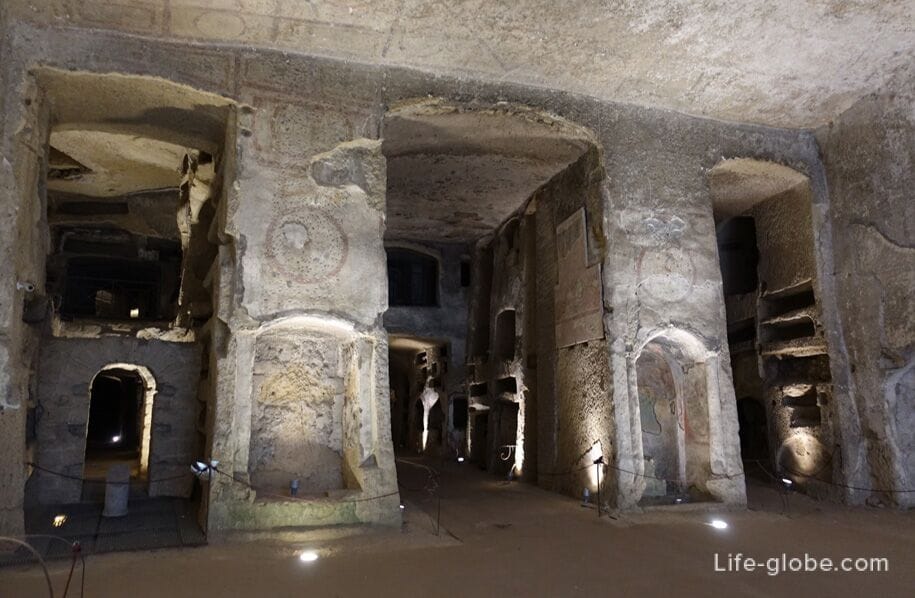
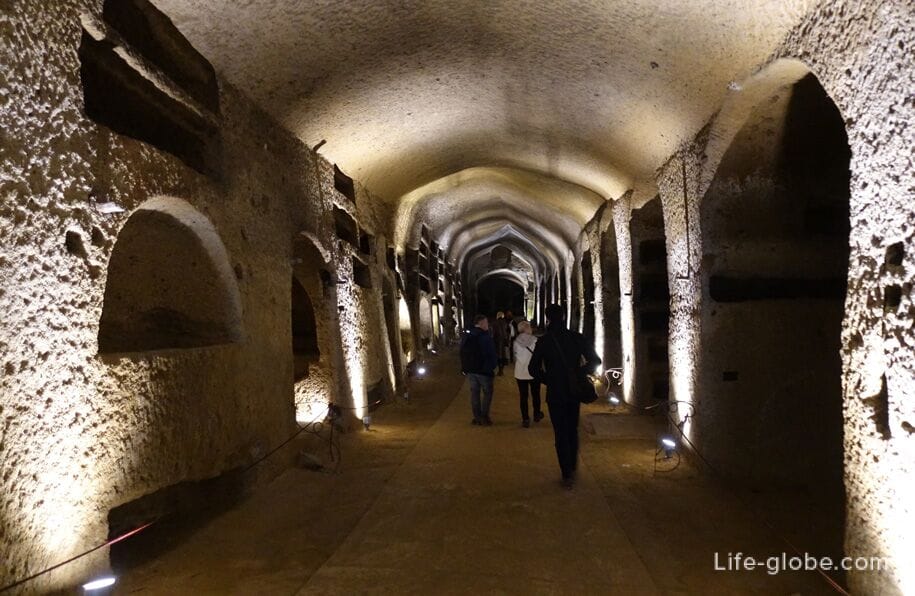
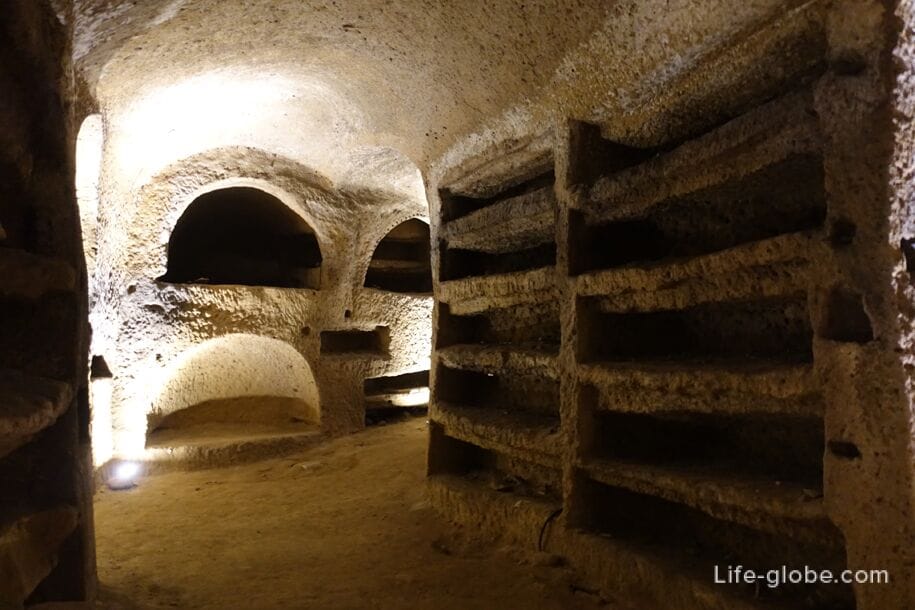

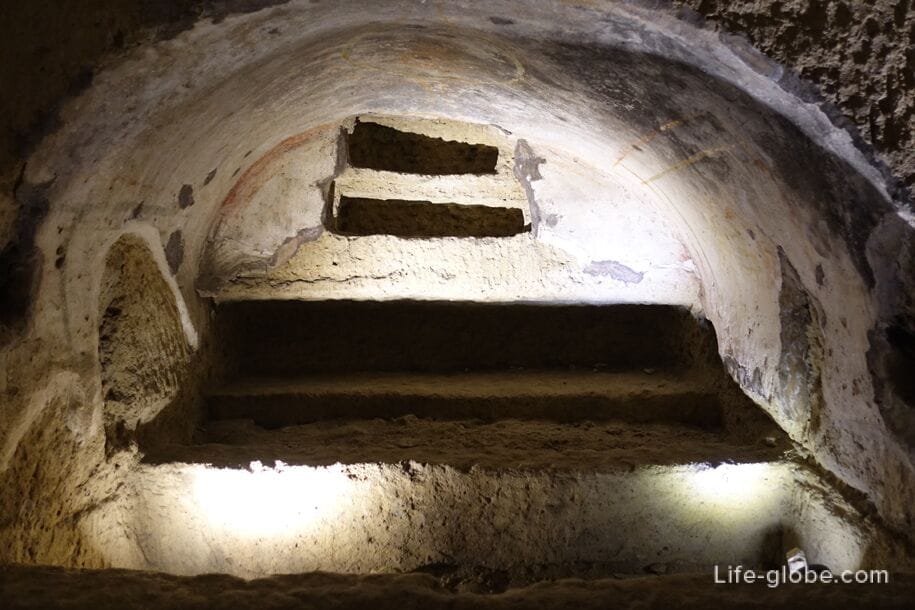
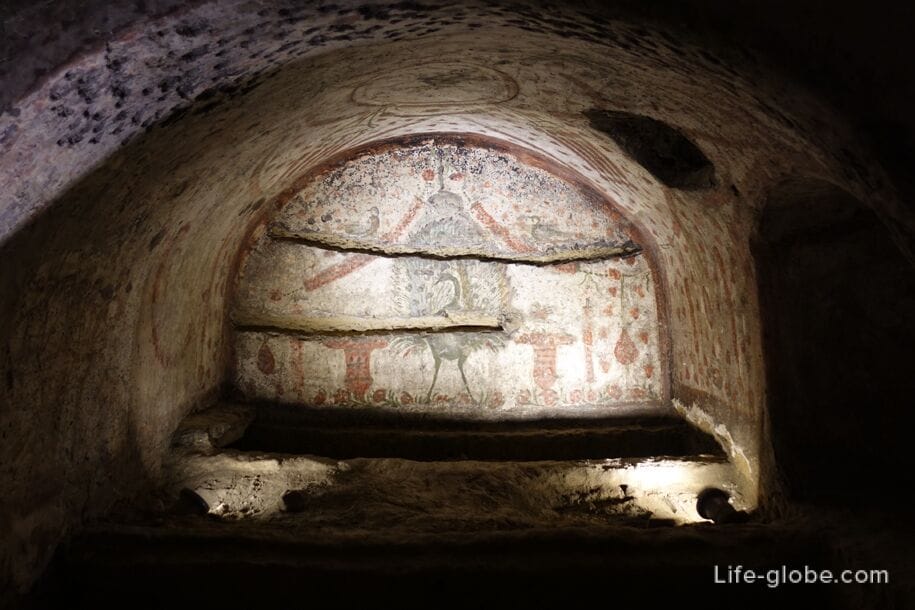

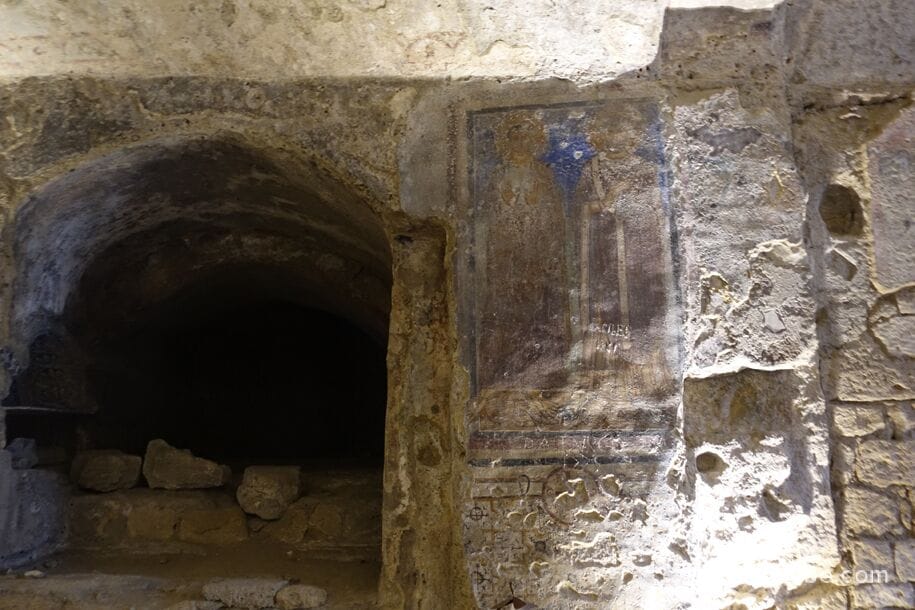
The arrival on the open space leading from the lower part of the catacombs to the top
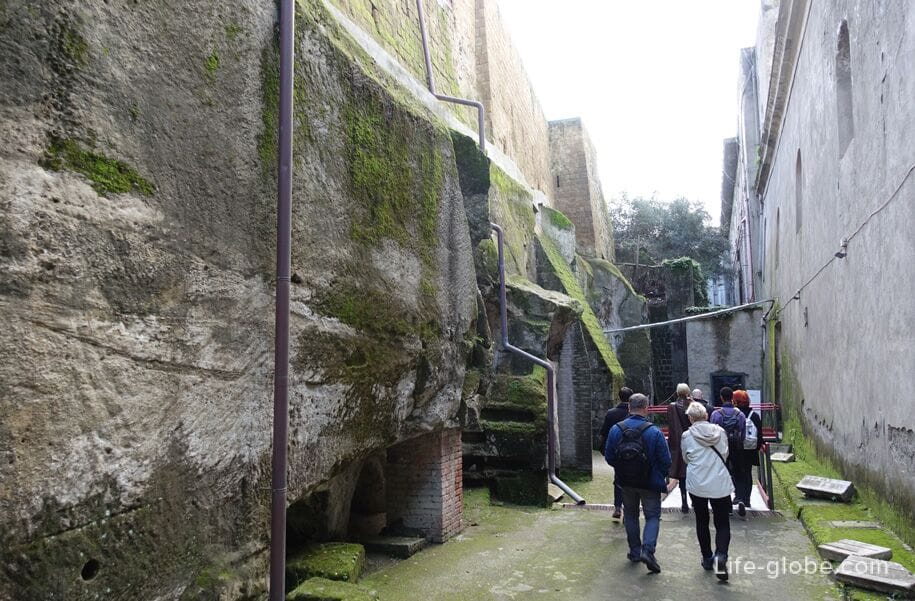
The upper part of the catacombs (San Gennaro Superiore) - the burial place of bishops, derived from an ancient tomb, Dating from the 3 century ad, which preserved some of the early paintings of southern Italy.
The extension of the catacombs began with a transfer to this place in the fifth century of the remains of San Gennaro - St. Januarius the Martyr, revered by Catholic and Orthodox churches, the patron of Naples. The presence of the burial of San Gennaro has led to the fact that the upper catacombs became a place of pilgrimage and burial.
The tomb of San Gennaro, located in the cubiculum
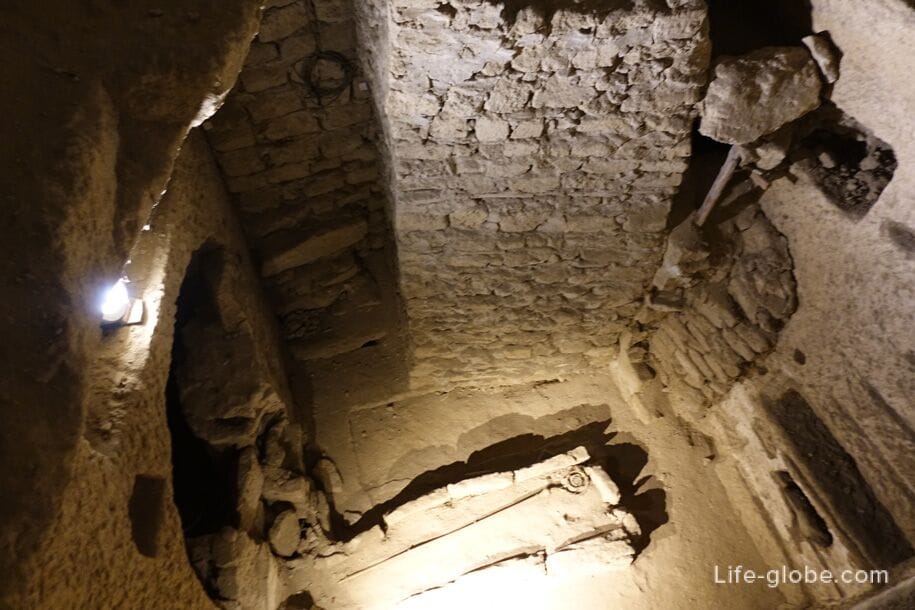
Two striking examples of the expansion of the catacombs are the Crypt of the bishops where they were buried bishops of the city, and which extended to a higher level, around the tomb of San Gennaro; and the underground Basilica with three naves, built to commemorate the transportation of the remains of San Gennaro in the catacombs.
In this part of the catacombs there are a variety of burial pits, some of which were decorated with frescoes and mosaics, representing today an artistic heritage, coming from the pagan elements of the second century ad and the Byzantine painting of 9-10 centuries. One of the most striking examples is the lobby of the upper catacombs, which was decorated in the beginning of the 3rd century in the so-called Pompeian style, whilst retaining the first Christian paintings of southern Italy.
Perhaps the most precious place is the Crypt of the bishops, which houses valuable mosaics of the 5th century.
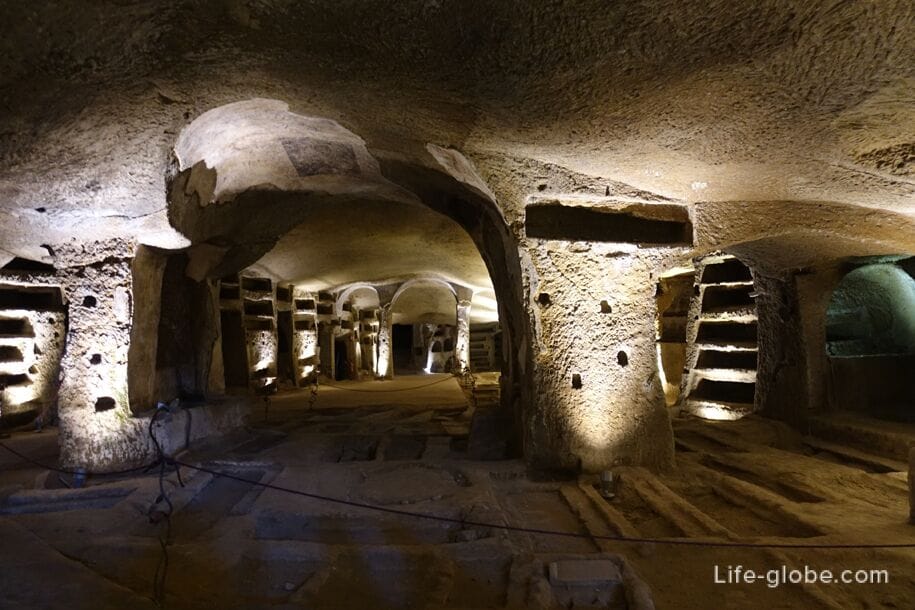
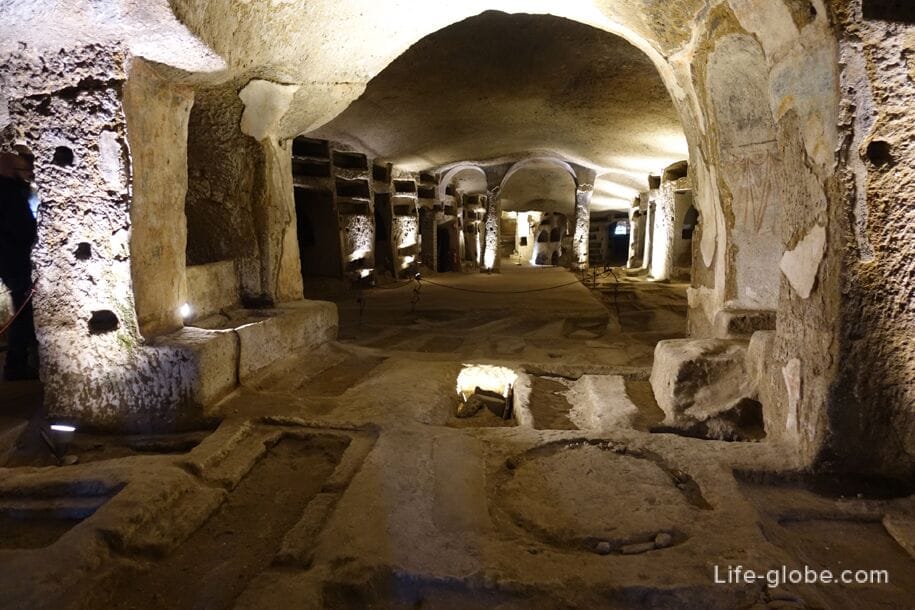


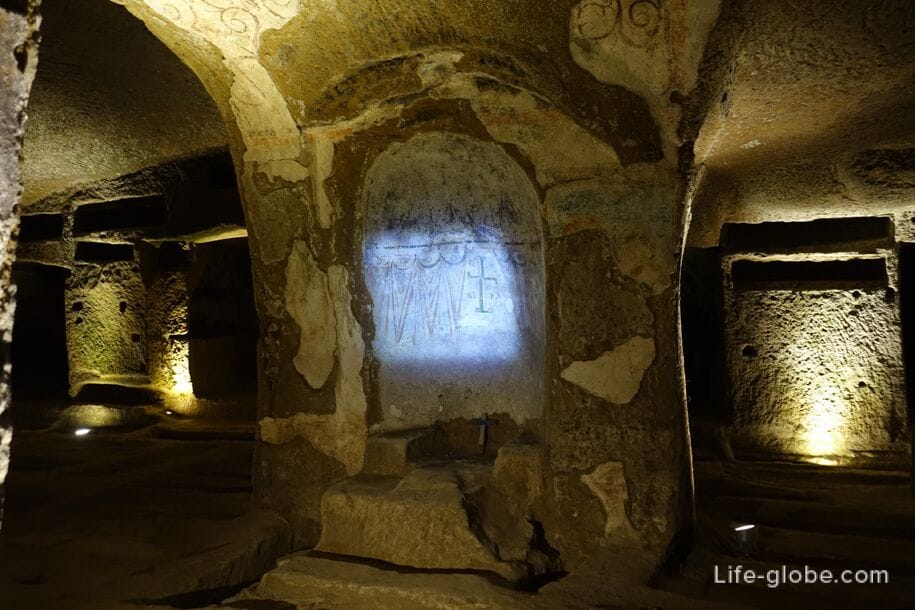

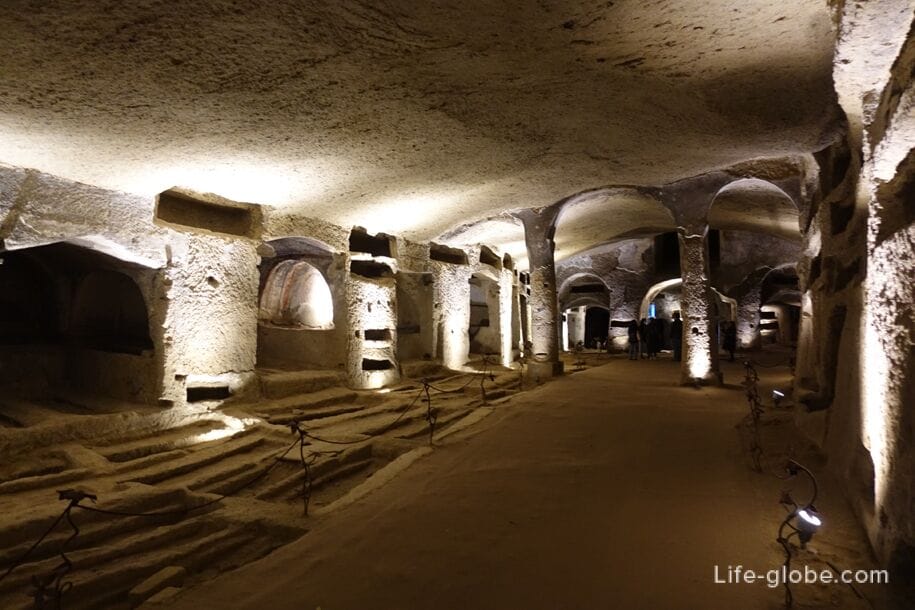

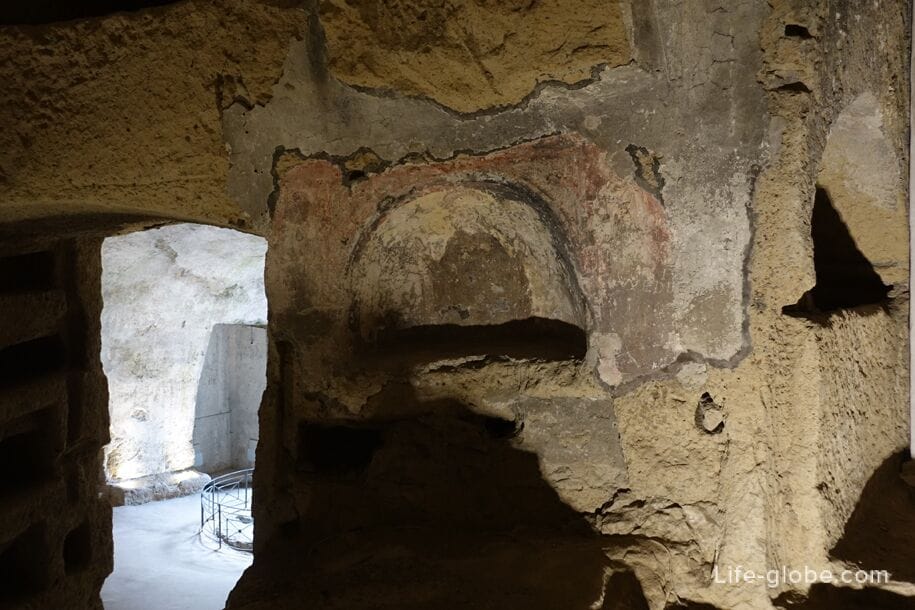



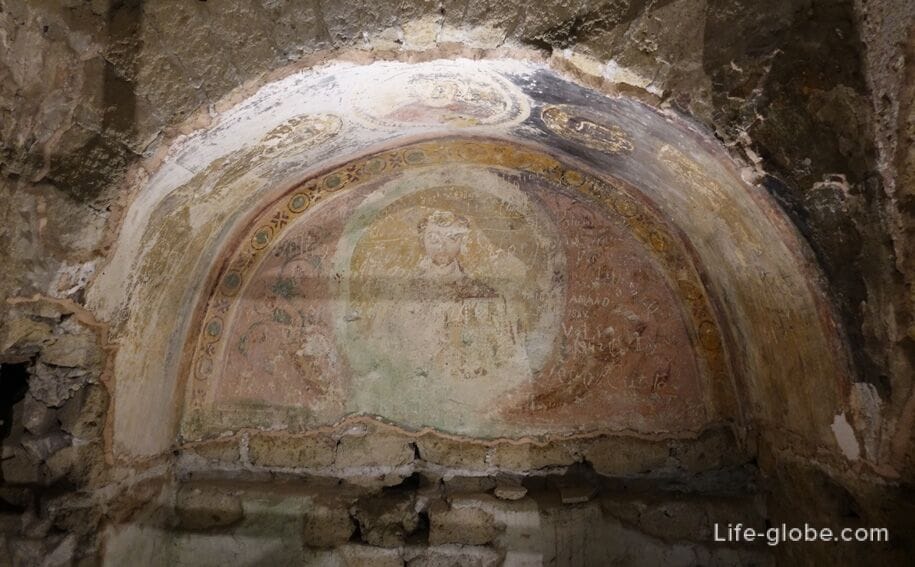
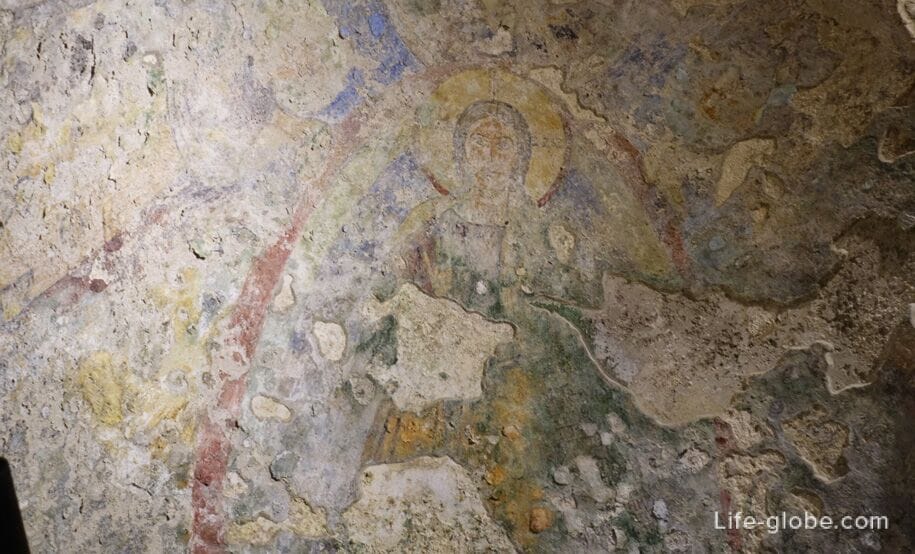
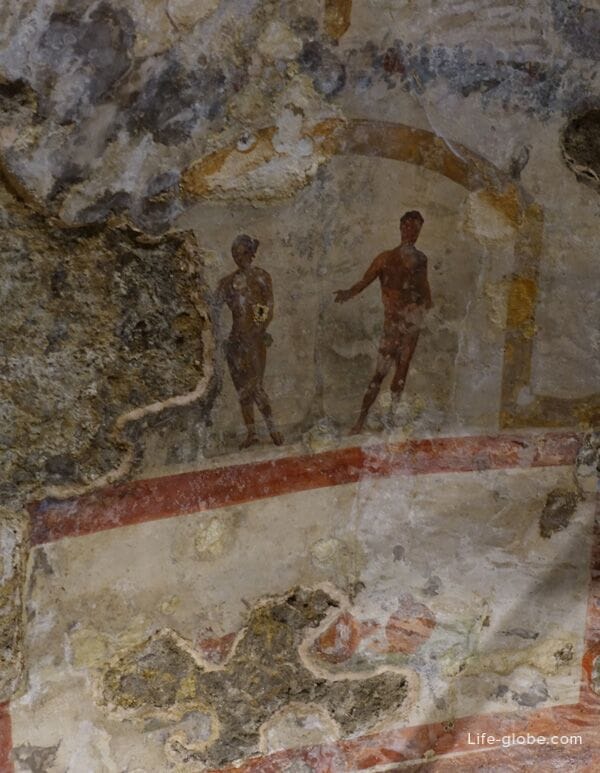
Until the eleventh century catacombs of San Gennaro was the burial site of Neapolitan bishops. Between the 13th and 18th century, the catacombs became victims of looting. The restoration of the catacombs became possible only after transfer of skeletal remains to another cemetery. During the Second world war the catacombs were used by the local population as a shelter. The catacombs were opened in 1969 by the Archbishop of Naples, and the modern excavations began in 1971.
Basilica of San Gennaro Extra Moenia the oldest early Christian Basilica dedicated to St. Gennaro.
The Basilica was built in the 5-6 centuries, not far from the catacombs where it was buried, the patron, and was a access to the catacombs. Consists of three large naves with a semicircular apse, which is a direct evidence of early Christian architecture.
In fact, the Basilica has undergone several changes over the centuries, are still visible in some features of structure: in the seventeenth century it was updated in accordance with the Baroque movement, was a place for plague victims, a hospice for the poor and part of the hospital of San Gennaro dei Poveri; in the early twentieth century, the Baroque elements were removed to restore the Basilica to its original style; in 2008, it was repaired and reopened to the public.
Today, the Shrine preserves the original early Christian structure with three naves with a semicircular apse and bare columns supporting a triumphal arch, with arcades in the style of Catalan-DuraSeal, while the atrium has a Renaissance style, with frescoes attributed to Agostino Tesauro.


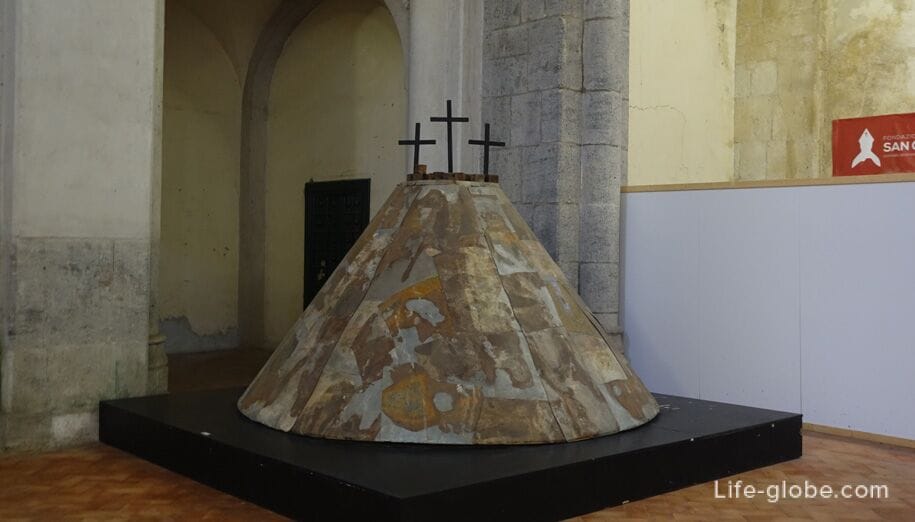

Address: Via Capodimonte, 13, 80136 Napoli NA, Italy.
A visit to the catacombs is only possible with a guided tour. The tour includes a visit to two of the catacombs of San Gennaro and San Gaudioso located at a small distance from each other - about 850 meters.
Tours are conducted in English and Italian.
Tickets can be purchased at the box office the catacombs of San Gennaro and the Church of Santa Maria della Sanita of which originates excursion to the catacombs of San Gaudioso. The order of the visits does not matter: buy the ticket in the same catacombs go on a trip, alone go to the second catacombs - imposed ticket - the second visited the catacombs. The ticket is valid for 12 months, to visit two of the catacombs.
Cost of tickets: full €9; children under 18 years - €5; students / seniors over 65 years / law enforcement - €6; children up to 6 years stay free of charge; groups (minimum 20 participants) from €6; schools €4. For purchasing discounted tickets must show documents.
Opening hours of the catacombs:
- closed 25 Dec;
- catacombs of San Gennaro - Monday to Saturday from 10:00 to 17:00 (last tour at 17:00), Sunday 10:00 to 14:00 (last tour at 14:00), guided tours every hour;
- catacombs of San Gaudioso - Monday to Sunday from 10:00 to 13:00 (last tour 13:00), guided tours every hour.
The Route Of The "Holy Mile". Every Sunday at 9:30 a.m., for 15 euros and upon prior reservation you can visit the group Holy Mile route, passing through the sanità neighborhood. The route starts from the entrance to the catacombs of San Gennaro and includes visits to several area churches, the catacombs of San Gennaro, the cemetery of Fontanelle, Palazzo Sanfelice, the Spanish Palace and the port of San Gennaro - the end of the route at the gate.
Attention! Hours of the tours, terms and cost of tickets may vary, please check before visiting. Site.
Cash the catacombs of San Gennaro is located near the Church of the blessed virgin Mary (Basilica Dell ' Incoronata Madre del Buon Consiglio), which is close to the Fountain Princess Queen Helena (Fontana Della Duchessa Regina Elena). Near the Church you can see the bust of St. Gennaro with a height of over 4 meters.
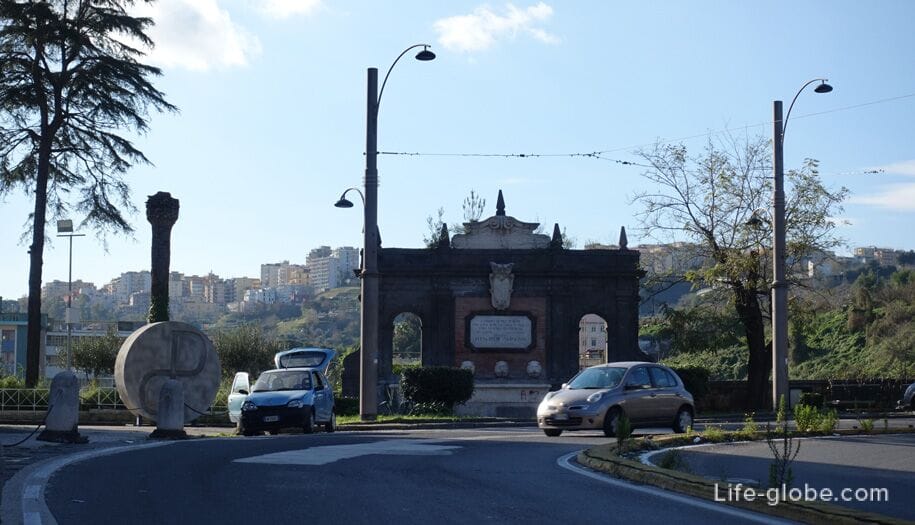
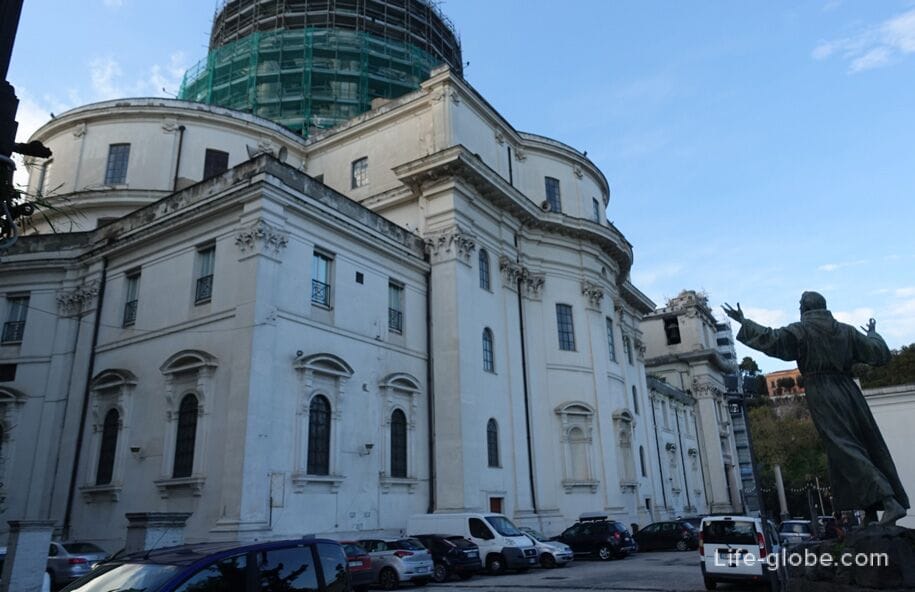
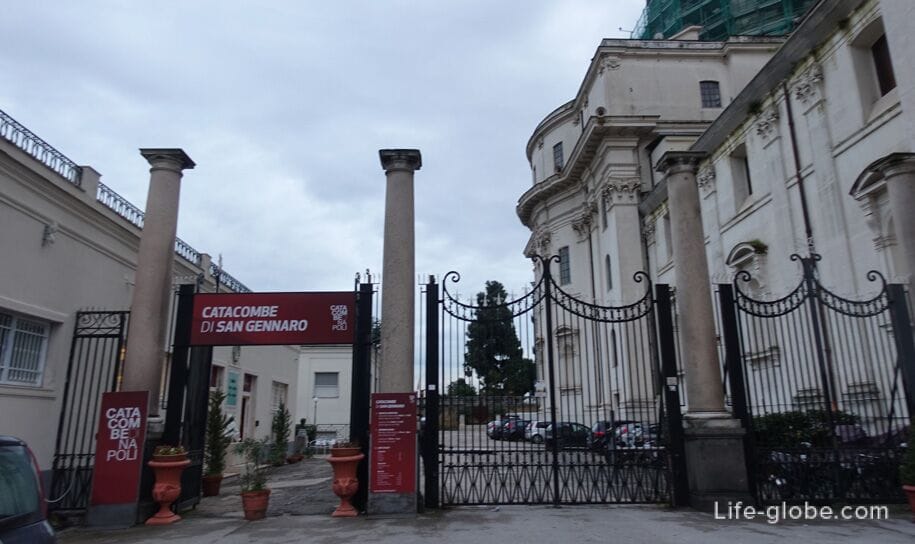
On-site box office café, shop and toilets
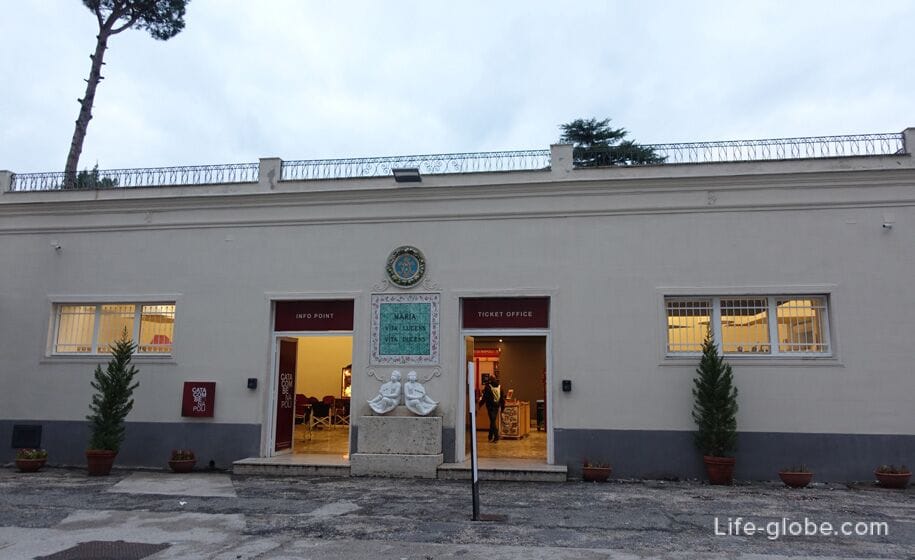

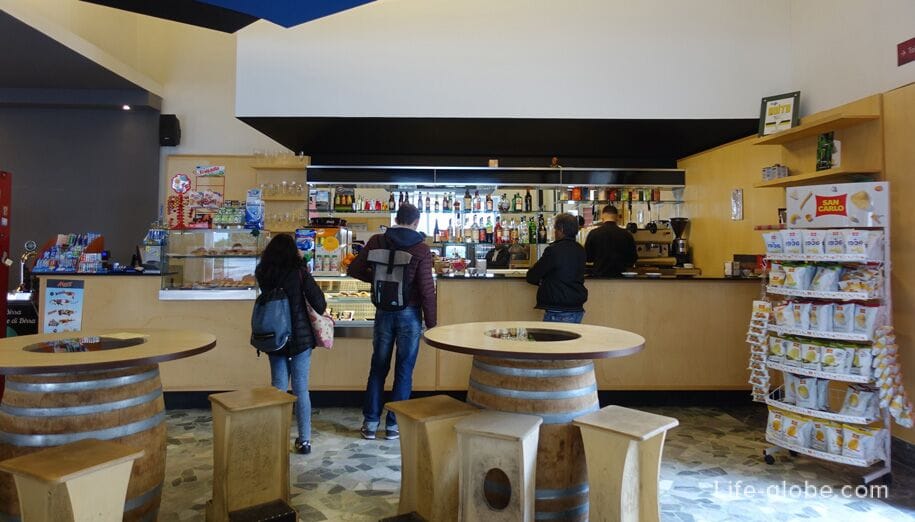
In the catacombs of San Gennaro first, visit the upper catacombs, and then the lower Basilica of San Gennaro Extra Moenia. The guide will meet in visiting banks, then leads to the entrance to the upper part of the catacombs.

